Transcription of Closing the Achievement Gap With Curriculum Enrichment …
1 502 Volume 19 Number 3 Spring 2008 pp. 502 530tClosing the Achievement Gap With Curriculum Enrichment and Differentiation:One School s StoryMargaret BeecherWest Hartford Public SchoolsSheelah M. SweenyUniversity of ConnecticutThe focus on the Achievement gap has intensified since the No Child Left Behind Act (NCLB) was passed in 2001. In particu-lar, Achievement gaps among culturally, linguistically, ethnically, and economically diverse groups pose great concern to educa-tors and policymakers. Another outgrowth of NCLB involves the adoption of high-stakes testing to measure Achievement and evaluate school effectiveness (Cronin, Kingsbury, McCall, & Bowe, 2005; NCLB, 2001).
2 The educational literature is replete with recommendations for improving student Achievement and Closing the Achievement gap; however, research suggests that the gap remains. Since the standards and accountability movement gained momentum in the 1990s, school report cards, school Copyright 2008 Prufrock Press, Box 8813, Waco, TX 76714summaryBeecher, M., & Sweeny, S. M. (2008). Closing the Achievement gap with Curriculum enrich-ment and differentiation: One school s story. Journal of Advanced Academics, 19, 502 article summarizes a unique approach to reducing the Achievement gap that strategically blended differentiated Curriculum with schoolwide Enrichment teaching and learning.
3 The theories of Enrichment and instructional differentiation were translated into practice in an elemen-tary school that had previously embraced a remedial paradigm. This Enrichment approach resulted in improved student Achievement and the reduction of the Achievement gap between rich and poor and among different ethnic groups. The school improvement process began with a thorough analysis of the strengths and weaknesses of all dimensions of the school, and resulted in the creation of a school mission, strategic plan with broad instructional goals, specific learning objectives, and detailed action plans. Enrichment and differentiation were chosen as the methods to improve the learning environment based on evidence that engagement in learning is enhanced when students interests and choices are considered, and the need to provide learning experiences that were responsive to the learning characteristics of a diverse stu-dent population.
4 Specific components of the strategic plan were imple-mented simultaneously while others were introduced over a series of years. Teachers rewrote the Curriculum for reading, writing, mathemat-ics, and social studies to include Enrichment experiences and differen-tiated instruction. This enriched learning environment extended to an afterschool program inspired by Enrichment Clusters. Staff development was essential to the success of each new initiative, and a significant amount of time was devoted to teacher training. Teachers were pro-vided with training, modeling, coaching, and planning time to integrate the new ideas and skills into their lessons.
5 504 Journal of Advanced AcademicsCLOSING THE Achievement GAP WITH Enrichment choice through vouchers and charter schools, and school takeovers through local and state-level oversight and reconstitution have gained popularity (Harris & Herrington, 2006). Yet, during this time, the Achievement gap has increased (Harris & Herrington, 2006). Progress in reducing school segregation and increasing Achievement during the 1960s 1980s has faltered. Communities have become more economically segregated, resulting in schools with larger minority and poor populations and lagging achieve-ment (Foorman, Francis, Fletcher, Schatschneider, & Mehta, 1998; Harris & Herrington, 2006; Lara-Conisomo et al.)
6 , 2004). Poverty continues to be one of the most persistent factors that negatively impacts student Achievement (Barton, 2003; Barton & Coley, 2007; Harris & Herrington, 2006; Lara-Conisomo et al., 2004; Lutkus, Grigg, & Donohue, 2007; RAND Labor and Population, 2005). Under No Child Left Behind (2001), reading and mathe-matics are the two subjects that are used to gauge the academic progress of students in grades 3 8. Efforts to reduce the Achievement gaps in reading and math have resulted in some reductions; however, the gaps between White students and their African American and Hispanic peers, and between stu-dents from high and low socioeconomic households still exist (Chatterji, 2006; Cronin et al.
7 , 2005; Lutkus et al., 2007). Factors that affect overall student Achievement include the rigor of the Curriculum ; the experience, quality, and com-mitment of the teachers; the learning environment, including safety and expectations of students; and class size (Barton, 2003; Chatterji, 2006). The family plays an important role in school success: Reading to children at home, parent involvement in school, and regular school attendance promote student achieve-ment (Barton & Coley, 2007; Chatterji, 2006; RAND Labor and Population, 2005). Recommendations for school improvement frequently include standards-based instruction, Curriculum alignment and coherence, data-based decision making, improving teacher skills through evaluation and professional development, family and community involvement, and other research-based initiatives.
8 505 Volume 19 Number 3 Spring 2008 Beecher & SweenyAlthough these recommendations have merit, they have not nec-essarily resulted in significant differences in student Achievement in failing schools (ACT, 2006; Education Trust, 2006a, 2000b). In this article, we summarize a unique approach to this perva-sive problem and share a solution that blends a focused, rigorous Curriculum with the strength-based methodology of schoolwide Enrichment teaching and learning. This approach resulted in improved student Achievement and the reduction of the achieve-ment gap between students from high- and low-SES families and among students of different ethnic groups in one school.
9 What follows is an account of how the theories of Enrichment and instructional differentiation were translated into practice in an elementary school that had previously embraced a remedial article is based on 8 years of work within an elemen-tary school and the historical and working documents accu-mulated during that time. Information was drawn from staff meeting agendas and supporting documents distributed to the staff, from the strategic plan, from materials prepared for profes-sional development sessions, and from documents created for specific areas of the Curriculum including the Global Studies theme in social studies, mathematics, and reading.
10 Data that refer to demographic information were taken from the annual Strategic School Profile, a document that is required by the state within which the school was located. Test score data were taken from the reported scores on the state mastery tests for students in grade 4. The Challenge Central elementary School was one of 11 elementary schools in a high performing suburban district bordering a large 506 Journal of Advanced AcademicsCLOSING THE Achievement GAP WITH Enrichment city. However, Central School s population mirrored its urban neighbor and was considered a failing school. Students were per-forming in the 30th percentile in reading, writing, and math-ematics on state and district assessments.











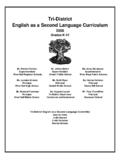
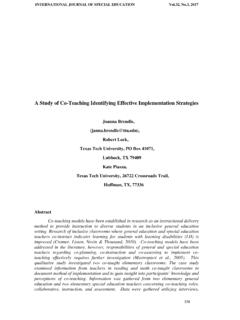
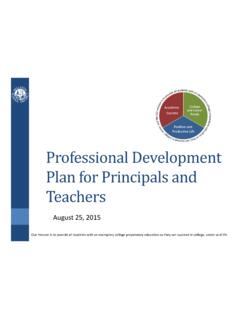
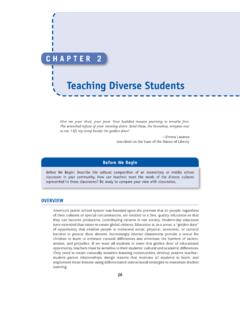
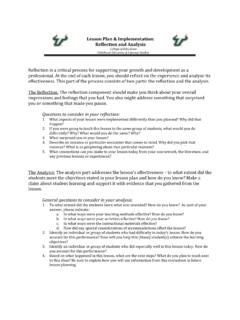

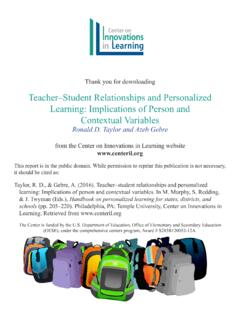
![The Ontario Curriculum, Grades 1-8, Language [revised] 2006](/cache/preview/d/5/3/5/d/c/7/4/thumb-d535dc7439a04910d8a17bf7f1d6b83f.jpg)